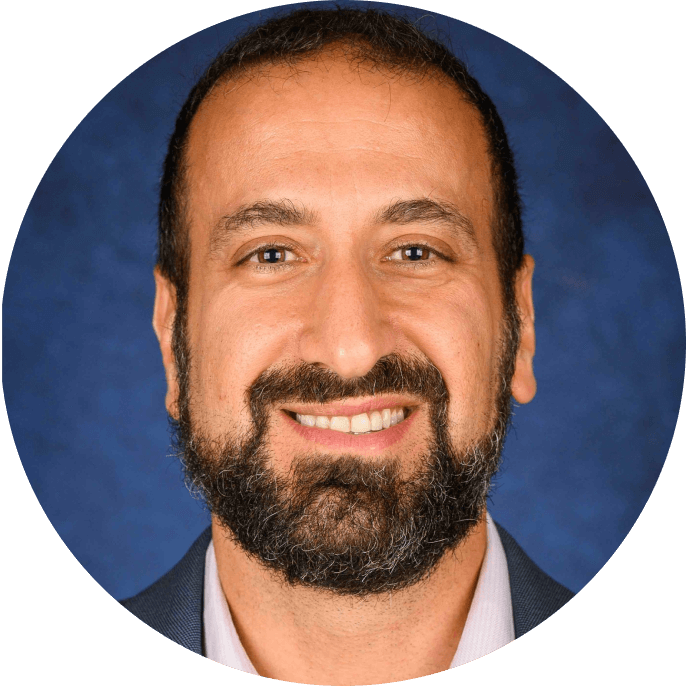How do you believe this first-ever therapeutic will change the history of liver disease?
Dr. Alkhouri: This is really a historic moment for all of us in the space because now we have a therapeutic agent that we can offer to our patients with the most aggressive form of the disease. The goal is to hopefully help decrease disease activity, liver inflammation, and liver cell injury—and more importantly, to reverse fibrosis or scarring of the liver. The hope is that, eventually, we can prevent progression to cirrhosis and liver-related outcomes. The arrival of a therapeutic is a game-changer because, historically speaking, when we had patients presenting with aggressive fatty liver disease, we only had lifestyle interventions to recommend (weight loss, optimizing the management of type 2 diabetes and metabolic syndrome, high cholesterol, etc.).
This is an exciting time for patients, as well. We’ve had several patients come to our clinics who are good candidates for the treatment. Many of them were happy to know that we have more to offer than a lifestyle intervention.
How was the ‘first patient’ diagnosed and identified for resmetirom (Rezdiffra™)?
Dr. Alkhouri: The patient came to me with elevated liver enzymes and an ultrasound showed fatty infiltration of the liver. We did a FibroScan® test, which we do on every new patient in our clinic, and we identified that there was significant fibrosis, based on what we call liver stiffness measurement. When we looked at the entire picture, this was a patient with metabolic syndrome, type 2 diabetes, elevated liver enzymes, elevated liver stiffness on FibroScan®, and liver fat that was in excess amounts on the ultrasound and also on the FibroScan®. So, we felt that this is an appropriate patient to be treated with resmetirom. There was no doubt that this patient had advanced disease. This patient has tried lifestyle interventions to lose weight, unsuccessfully. So, I felt the time was right to get the patient on the FDA-approved pharmacologic treatment.
Why are non-invasive tests like FibroScan® critical to identify patients for this treatment?
Dr. Alkhouri: Non-invasive testing will play a significant role in identifying the appropriate patients that need to be treated with resmetirom and other therapeutic agents in the future. We rarely do biopsies in our clinics to identify the severity of fatty liver disease; we rely on noninvasive tests. The test we use the most in our clinics is FibroScan®. FibroScan® has been around for a long time in the United States. It’s backed by over 4,000 publications that are peer reviewed. As a hepatology provider, I have confidence in the technology.
Use of non-invasive tests is critical. The main driver behind disease outcomes is really the fibrosis stage. Then, we get an idea about disease activity by looking at liver enzymes and the amount of steatosis. By doing this non-invasive test, we have an idea about what we’re going to find in the liver biopsy. The key is to look at the trend—not just two measurements. With biopsy, you have to be very selective. You can’t do five or six biopsies in the same patient, but with technologies like FibroScan®, the test can be done every six to 12 months. This way, you can look at the trend and assess for response to treatment in a very safe way. Despite the FDA approval being based on histology data, we do have some guidance and prescribing information on how the patient population looks based on FibroScan® data and other non-invasive tests. I think we know these thresholds for patients that will qualify for resmetirom, based on liver stiffness, the CAP™ score, and also the presence of other metabolic risk factors, such as type 2 diabetes.
How can non-invasive tests help breed confidence among providers to prescribe treatment and support their patients’ adherence to the treatment over time?
Dr. Alkhouri: At the end of the day, we want to identify patients before they progress through cirrhosis. FibroScan® has a very good negative predictive value. When you have low liver stiffness on FibroScan®, you can rule out the presence of significant fibrosis in a high percentage of patients.
I would say that, in our experience, probably a good 85-90% of patients can be correctly classified based on FibroScan® data, along with the clinical characteristics of the patients and some basic labs. This involves combining clinical judgment with what we refer to as the pretest probability, assessing metabolic risk factors, platelet count, and AST to ALT ratio, FIB-4 score, in addition to performing a FibroScan®. Another thing to know is that there are Scores you can calculate using the FibroScan® measurements, such as the Fast™ score, which can predict at-risk MASH, the Agile 3+, which can predict the presence of advanced fibrosis, and the Agile 4 Score, which can predict the presence of cirrhosis. These are very helpful in our clinic.
As you think about the large population of people at risk for liver disease and the need for expanded earlier screening and detection, what message or call to action do you have for fellow hepatologists?
Dr. Alkhouri: I think the FDA approval of the first MASH drug is a game changer because this should help us fight back against that inertia and the fact that most of these patients have obesity and type 2 diabetes. Telling them that they need to lose weight because they have MASH really didn’t go that far for primary care physicians or hepatologists. It’s not okay to tell a patient: “You have fatty liver disease—lose weight.” You have to determine the severity of the disease. This can be done with non-invasive tests—you don’t need an invasive biopsy. Every patient deserves to know if they are at risk. Biopsy is not the way to go, whether to make the initial diagnosis or to monitor response to treatment.
The time for change is now. Resmetirom is the first of hopefully many medications that will become FDA-approved by the end of this decade. Unfortunately, in our clinics every week, we still see a patient who was diagnosed with fatty liver disease 10 or 15 years ago and told to lose weight. They tried, and they didn’t lose enough weight, and now they show up with cirrhosis.
Having a new treatment will provide new energy and more reasons for all of us to work as a community to screen at-risk patients like those with type 2 diabetes and metabolic syndrome.

